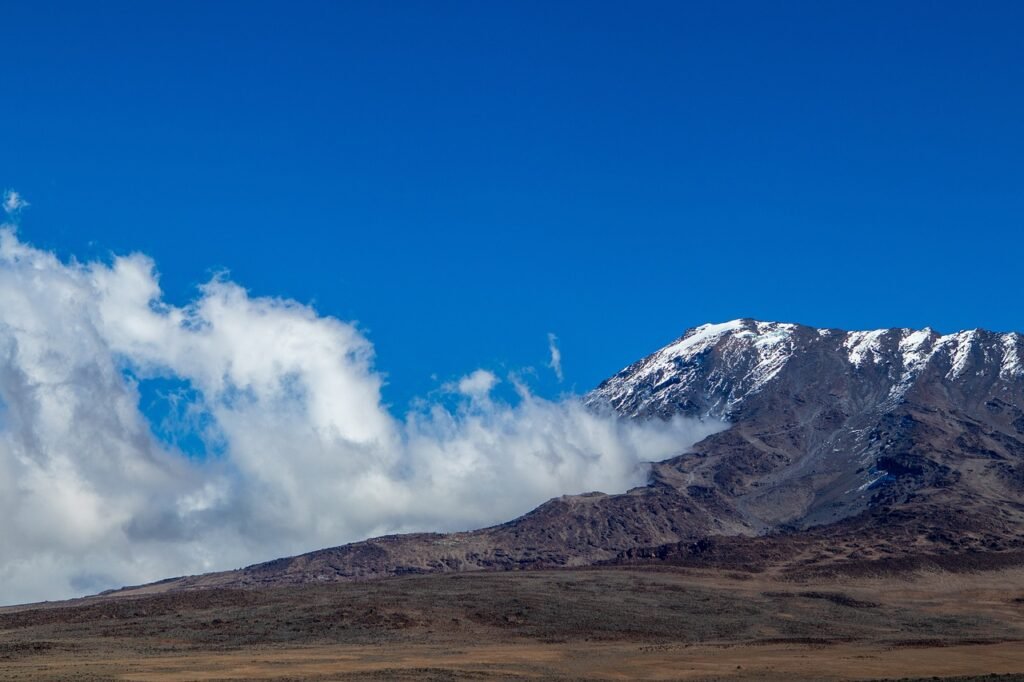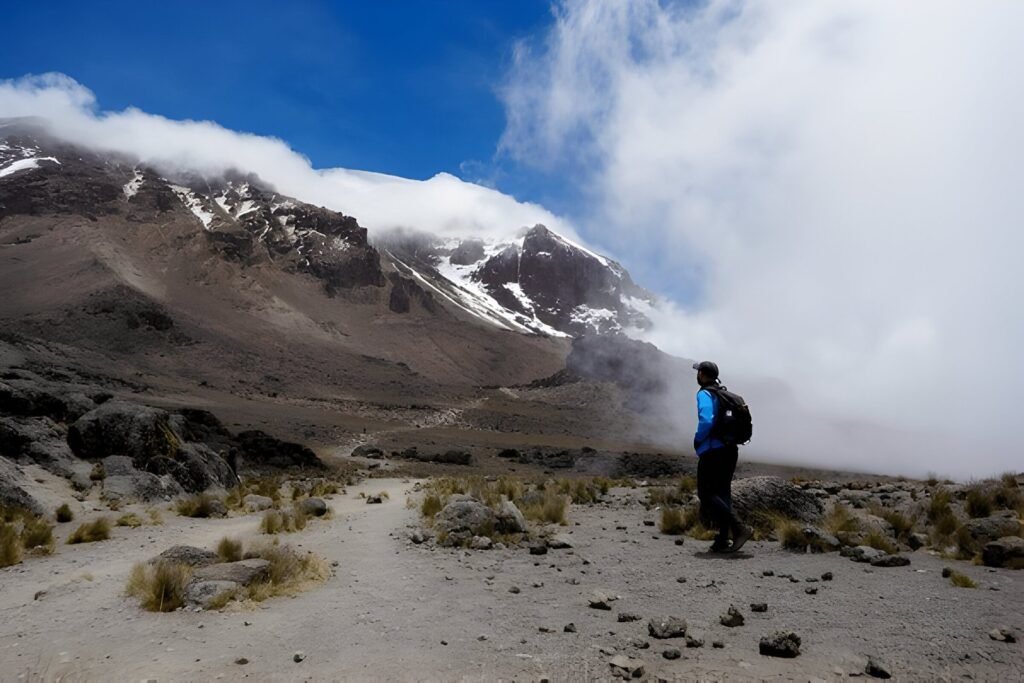Why Mount Kilimanjaro is a Top Tourist Attraction : Mount Kilimanjaro, the tallest free-standing mountain in the world, continues to attract adventurers from around the globe. Post-pandemic, it has become an even more popular destination as travelers seek safe, outdoor adventures and a chance to reconnect with nature. Standing at 5,895 meters (19,341 feet), Kilimanjaro offers a unique blend of breathtaking scenery, challenging climbs, and cultural richness. In this guide, we explore why Mount Kilimanjaro remains a top tourist attraction after the global pandemic.

Why Mount Kilimanjaro is a Top Tourist Attraction : A Safe, Outdoor Adventure in the Post-Pandemic Era
With the world recovering from the effects of the pandemic, travelers are increasingly seeking outdoor destinations that provide safe, open spaces for exploration. Mount Kilimanjaro offers exactly that, with vast, uncrowded trekking routes and the opportunity to immerse yourself in nature. Climbing Kilimanjaro involves days spent in fresh air, away from crowded tourist hotspots, making it an ideal choice for those seeking a safe, socially distanced adventure.
Learn more about Kilimanjaro climbing safety with Kilimanjaro Climb Specialist
Why Mount Kilimanjaro is a Top Tourist Attraction : Reconnect with Nature and Enjoy Solitude
After months of lockdowns and restrictions, many people are craving time in nature. Mount Kilimanjaro is the perfect place to reconnect with the natural world. The mountain’s diverse landscapes, from lush rainforests to alpine deserts, offer climbers a chance to witness some of the most stunning scenery in Africa. The sense of solitude and tranquility at higher altitudes makes Kilimanjaro one of the best destinations for escaping the stresses of modern life.
Why Mount Kilimanjaro is a Top Tourist Attraction : Accessible for Climbers of All Experience Levels
Despite its impressive height, Mount Kilimanjaro is known as one of the world’s most accessible high peaks, making it a popular choice for climbers of all experience levels. Unlike many other high-altitude mountains, Kilimanjaro does not require technical climbing skills or mountaineering experience. Several routes, such as the Marangu and Machame routes, are tailored to beginner climbers, while more challenging routes like the Lemosho and Northern Circuit cater to seasoned trekkers. This accessibility has made Kilimanjaro a go-to adventure for post-pandemic travelers looking for a new challenge.
Find the best Kilimanjaro routes for your skill level with Eddy Tours Safaris
Why Mount Kilimanjaro is a Top Tourist Attraction : Support Sustainable Tourism and Local Communities
The pandemic has had a significant impact on local economies that rely on tourism. By climbing Mount Kilimanjaro, you are supporting sustainable tourism and helping local communities recover. The mountain is a key source of income for many Tanzanians, including guides, porters, and staff at hotels and lodges. Choosing to climb Kilimanjaro through ethical tour operators ensures that these workers are fairly compensated and that the environment is protected for future generations.
Learn more about sustainable tourism practices in Tanzania
Why Mount Kilimanjaro is a Top Tourist Attraction : Unmatched Views from Africa’s Highest Peak
The summit of Mount Kilimanjaro offers one of the most spectacular views on the continent. After days of trekking through different climate zones, reaching the summit at Uhuru Peak is a moment of triumph that leaves climbers with an overwhelming sense of achievement. On clear days, climbers are rewarded with sweeping views of the surrounding plains, the distant peaks of Mount Meru, and the vast African wilderness stretching into the horizon.
Discover the best viewpoints on Kilimanjaro
An Iconic Climb with Rich Cultural Significance
Mount Kilimanjaro holds great cultural and spiritual significance for the local Chagga people and other communities living around the mountain. Climbing Kilimanjaro offers more than just a physical challenge—it’s also an opportunity to learn about the cultural history of the region. Many climbers visit local villages at the base of the mountain, where they can interact with the Chagga people and learn about their way of life, farming practices, and traditions.
Explore cultural experiences around Mount Kilimanjaro
Kilimanjaro is a UNESCO World Heritage Site
Kilimanjaro National Park, which protects the mountain and its surrounding areas, was declared a UNESCO World Heritage Site in 1987. The park is home to diverse ecosystems, including rainforests, moorlands, and glaciers. Its unique biodiversity and the stunning beauty of its landscapes make it a globally significant conservation area. Visitors to Kilimanjaro contribute to the protection of this natural wonder, helping to preserve it for future generations.
Learn more about Kilimanjaro’s UNESCO status
Why Mount Kilimanjaro is a Top Tourist Attraction : A Bucket List Adventure
For many people, climbing Mount Kilimanjaro is a bucket list adventure. The challenge of trekking to the highest point in Africa is a powerful motivator for those looking to push their limits. After months of restricted travel and uncertainty, many people are looking to fulfill long-standing travel dreams. Kilimanjaro offers a once-in-a-lifetime experience that combines adventure, physical endurance, and personal growth.
Post-Pandemic Health Benefits of Trekking
In a post-pandemic world, people are increasingly seeking ways to improve their health and well-being. Trekking on Kilimanjaro offers multiple health benefits, including cardiovascular exercise, muscle strengthening, and mental health improvements through time spent in nature. The physical demands of the climb help build endurance, while the natural environment promotes relaxation and mental clarity, making Kilimanjaro a perfect destination for those seeking a health-focused vacation.
Discover the health benefits of trekking
Multiple Routes to the Summit
One of the reasons Kilimanjaro is so popular is the variety of routes available to climbers. Each route offers different scenery, difficulty levels, and durations, allowing travelers to tailor their climb based on their preferences. Popular routes like the Machame and Lemosho offer scenic views, while the Rongai route provides a quieter, less crowded experience. For those looking for the ultimate Kilimanjaro adventure, the Northern Circuit offers the longest and most remote trek, allowing for excellent acclimatization and stunning views.
Explore all Kilimanjaro routes with Kilimanjaro Climb Specialist

Why Mount Kilimanjaro is a Top Tourist Attraction : Frequently Asked Questions
1. How long does it take to climb Mount Kilimanjaro?
Climbing Kilimanjaro typically takes between 5 to 9 days, depending on the route you choose. Longer routes like the Lemosho or Northern Circuit allow for better acclimatization and increase the chances of reaching the summit.
2. What is the best time to climb Kilimanjaro?
The best time to climb is during the dry seasons, from June to October and December to February. These months offer the most favorable weather conditions for trekking.
3. Do I need to be an experienced climber to reach the summit?
No prior technical climbing experience is required to climb Kilimanjaro. However, good physical fitness and preparation are essential for a successful summit.
Why Mount Kilimanjaro is a Top Tourist Attraction : Ready to Conquer Mount Kilimanjaro?
Mount Kilimanjaro has proven to be a top post-pandemic destination for adventurers seeking a safe, outdoor experience. Whether you’re looking to reconnect with nature, push your physical limits, or explore the rich cultural heritage of Tanzania, Kilimanjaro offers an unparalleled experience. With diverse routes, breathtaking landscapes, and unmatched safety, it’s no wonder this iconic mountain continues to be a top tourist attraction.
Start planning your Kilimanjaro climb with Kilimanjaro Climb Specialist
Book your adventure today with Eddy Tours Safaris

